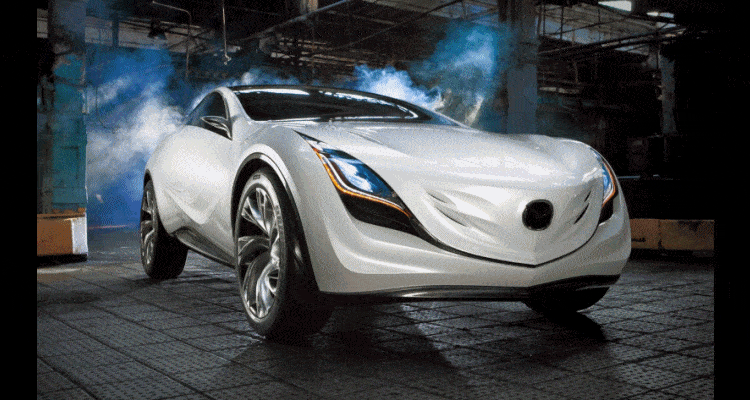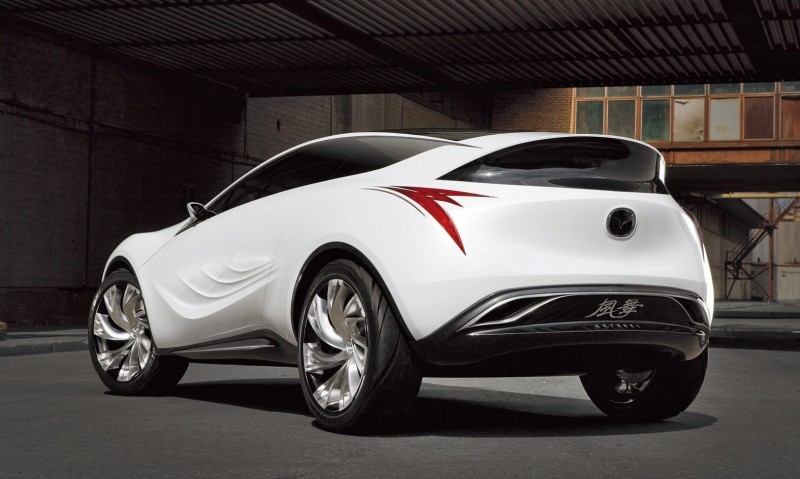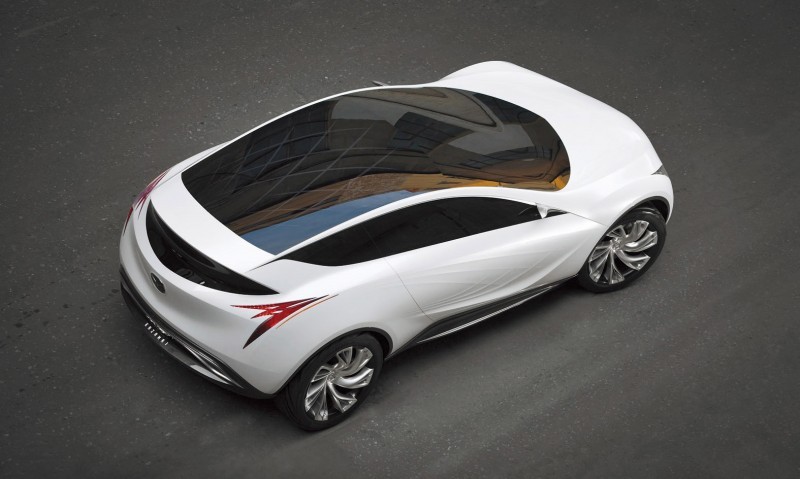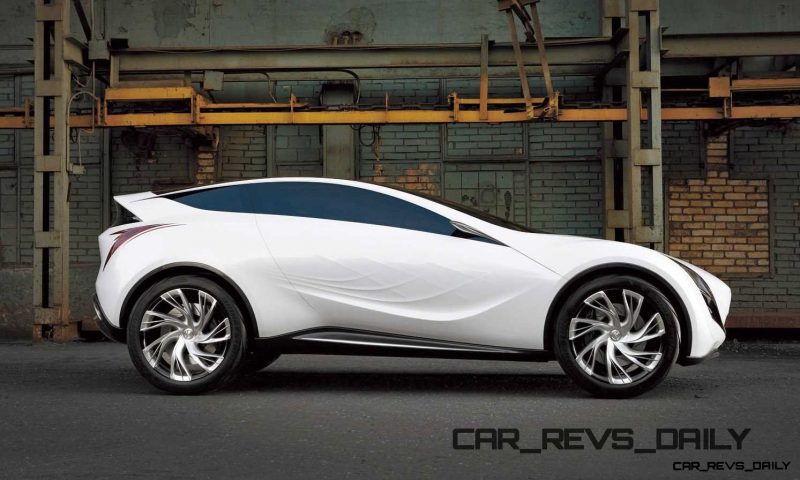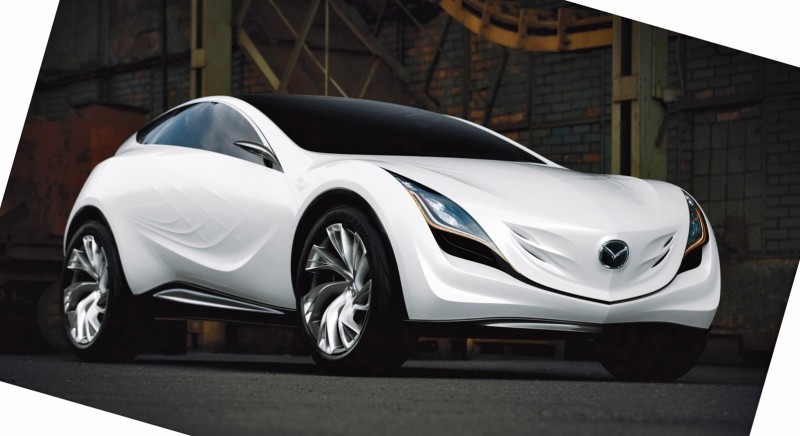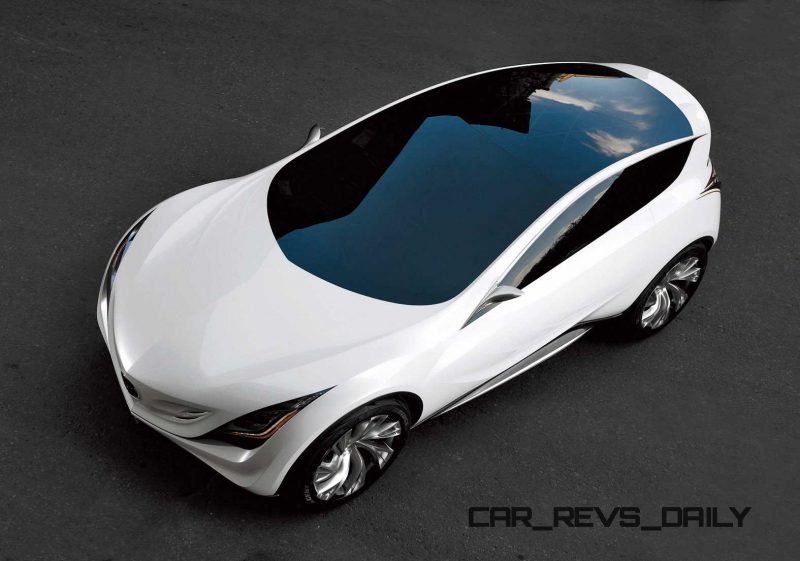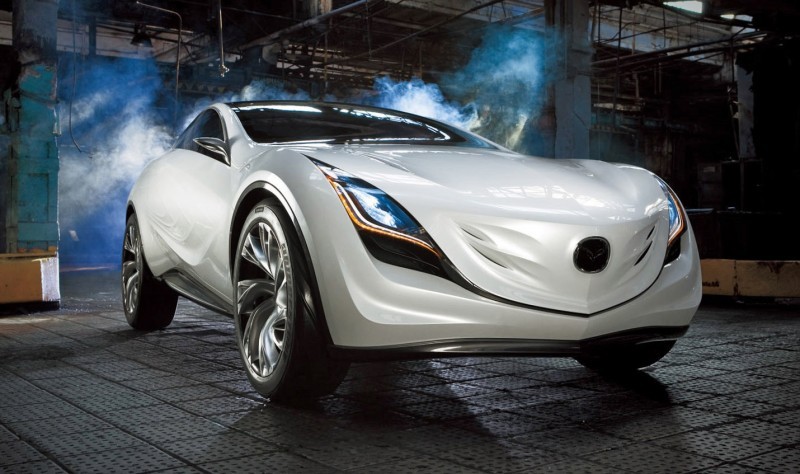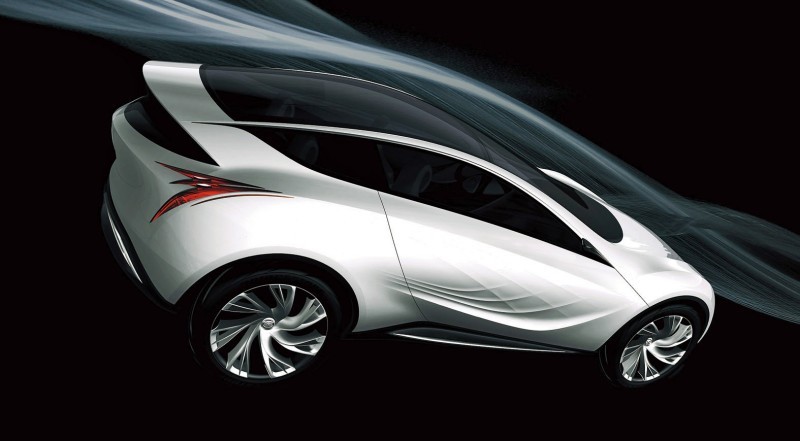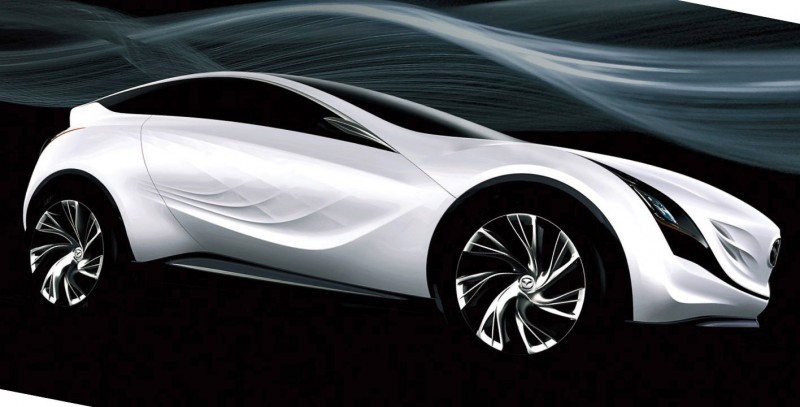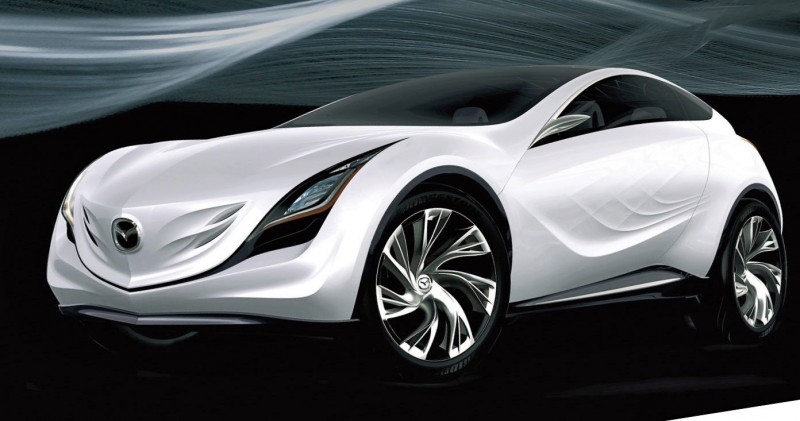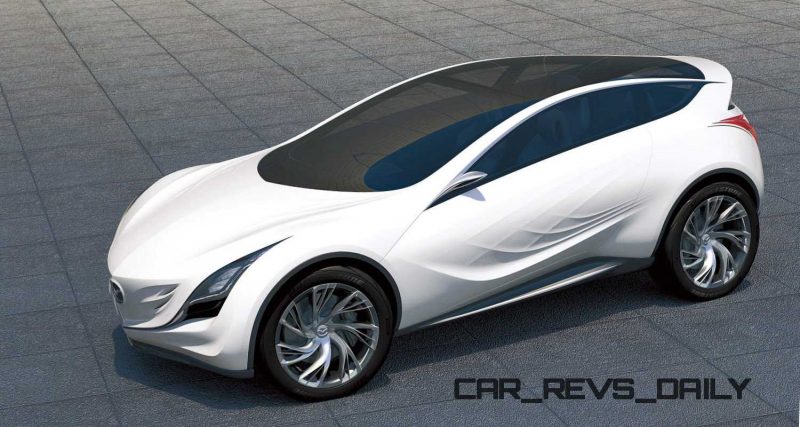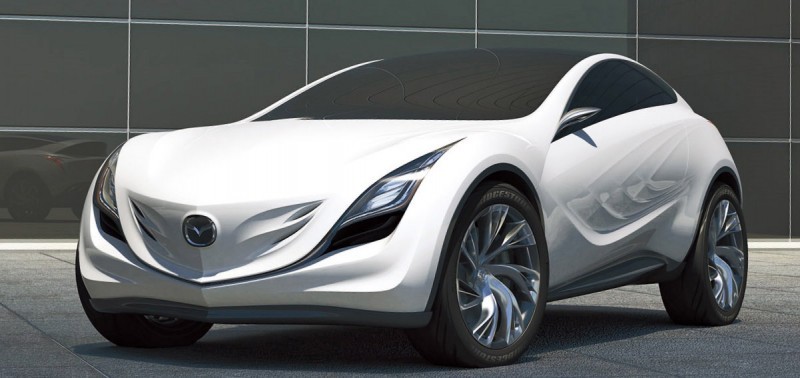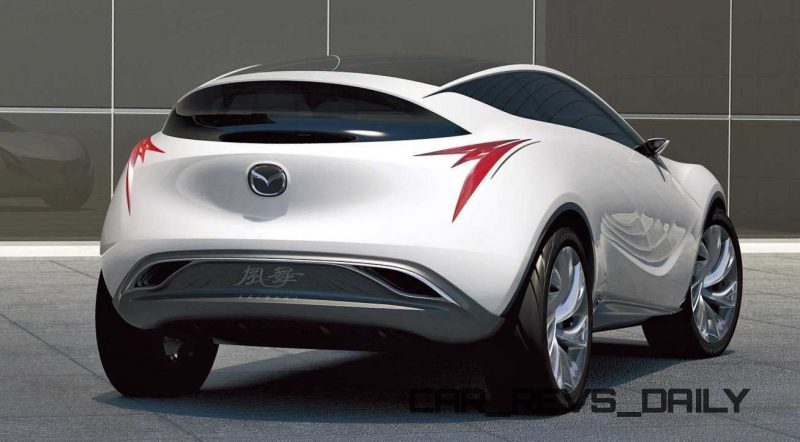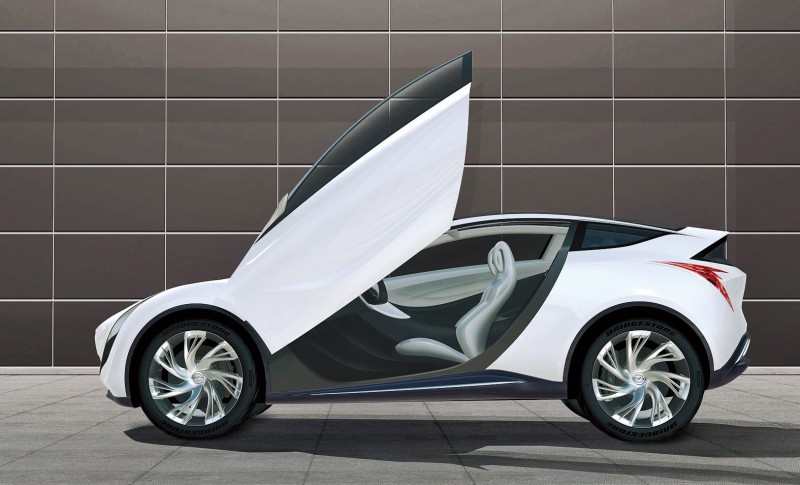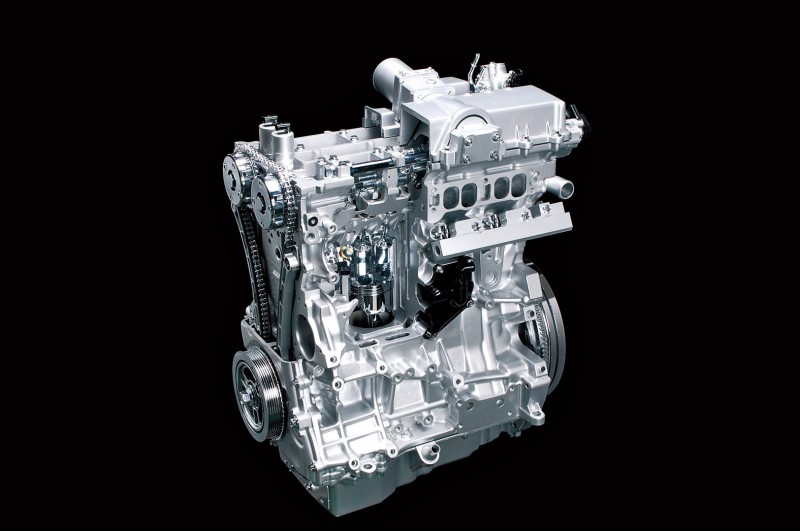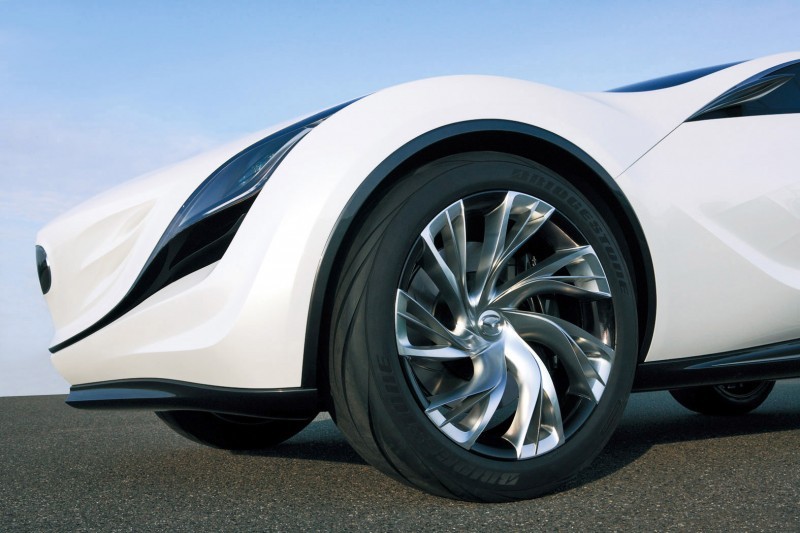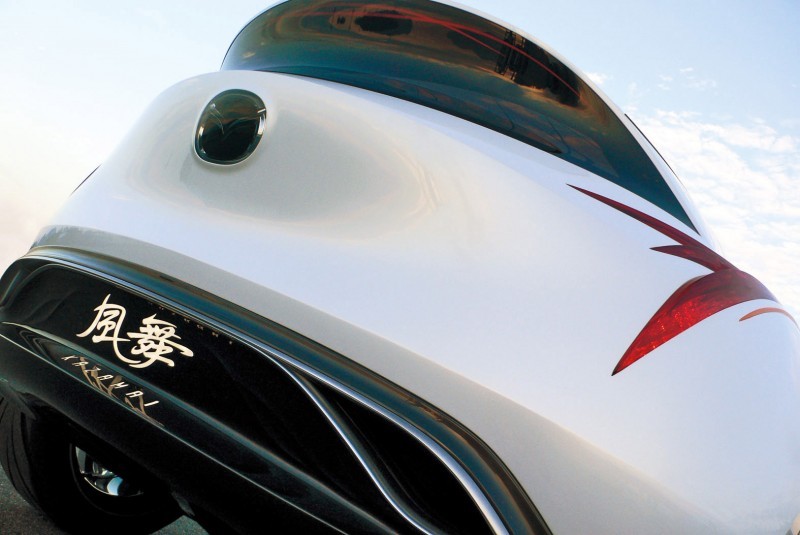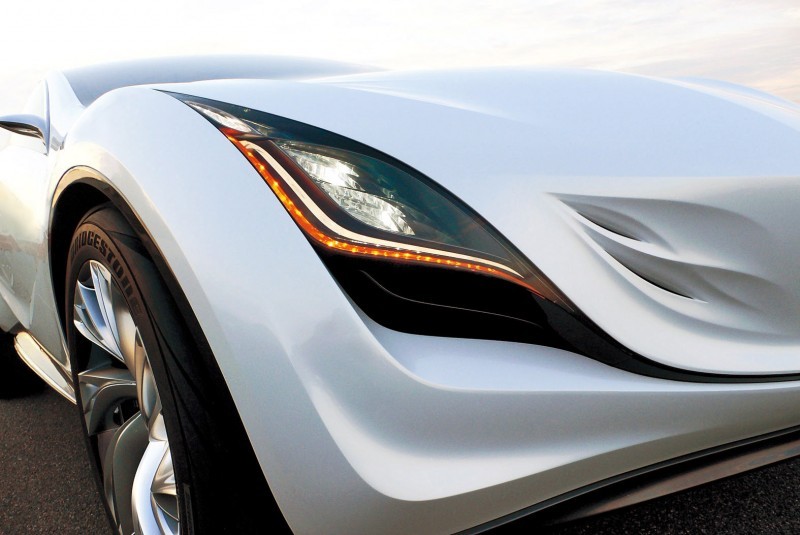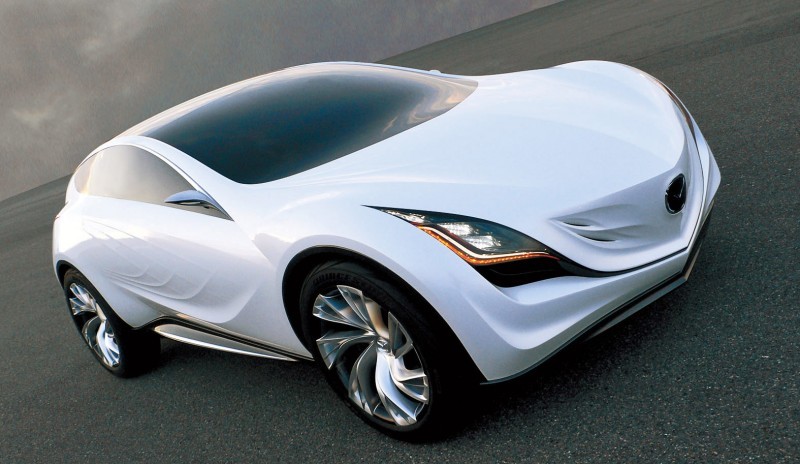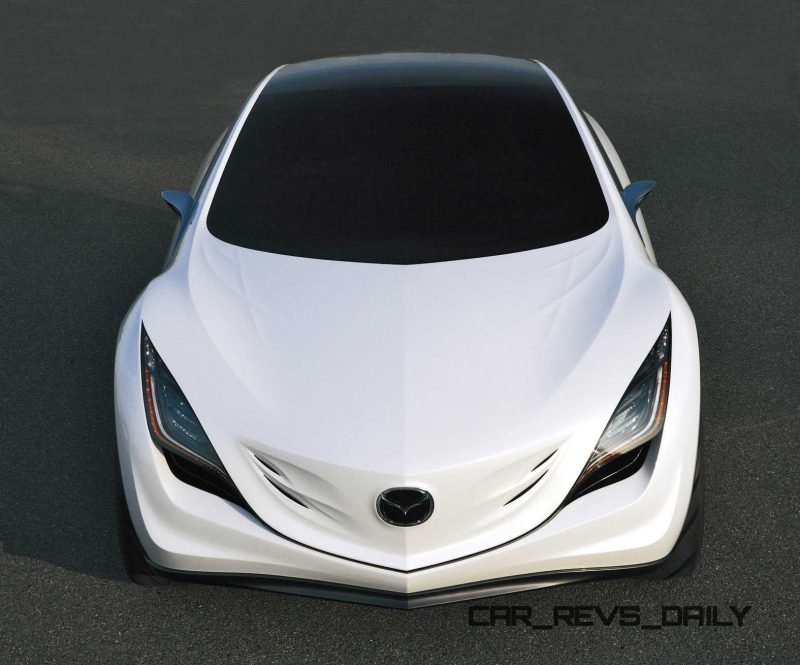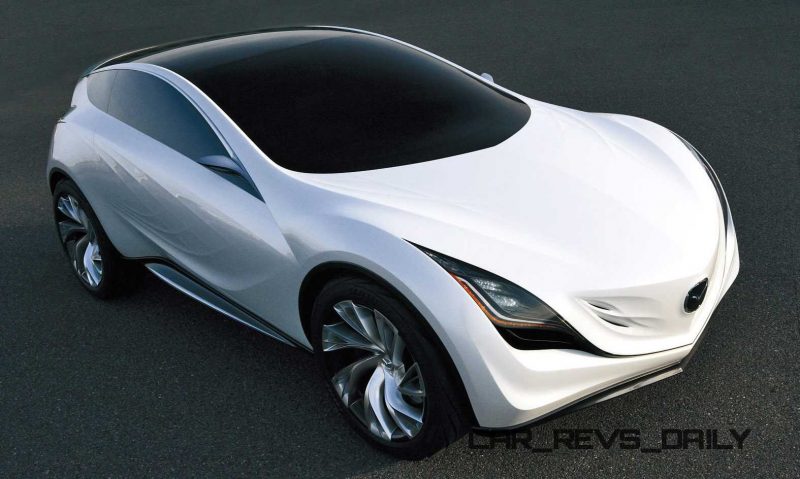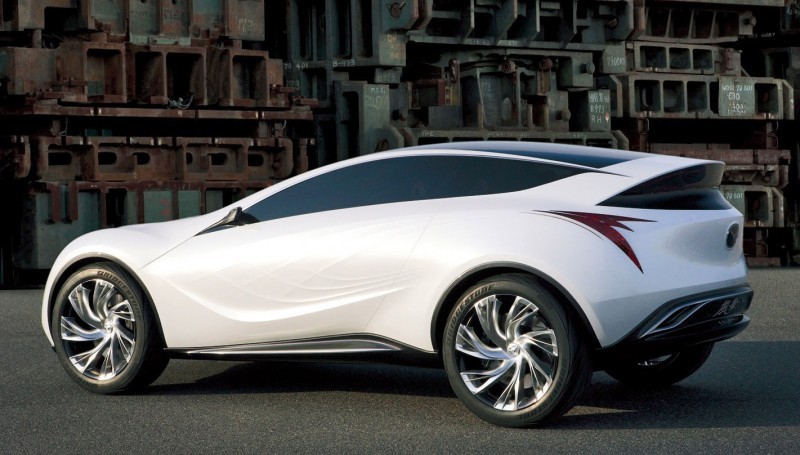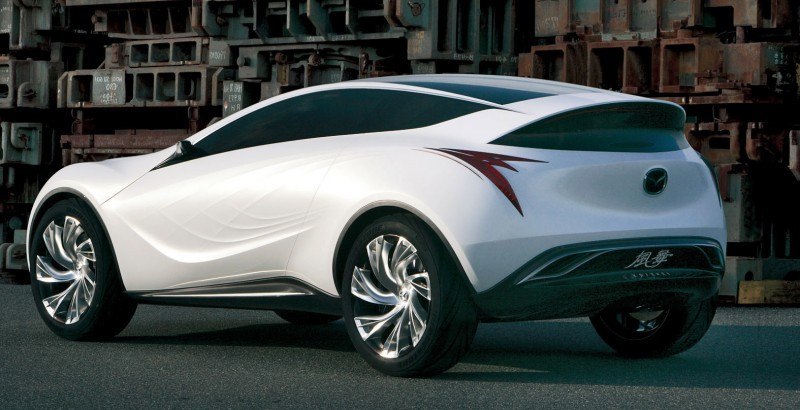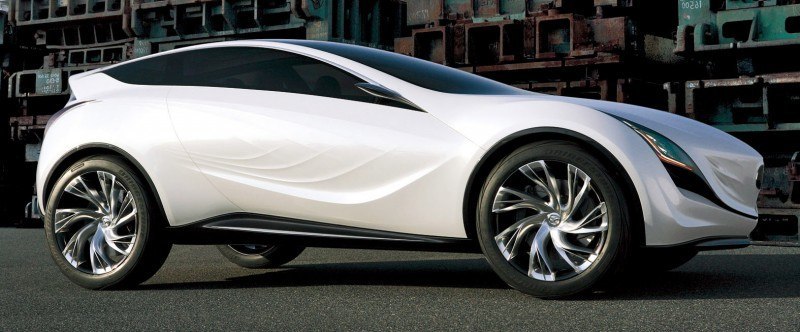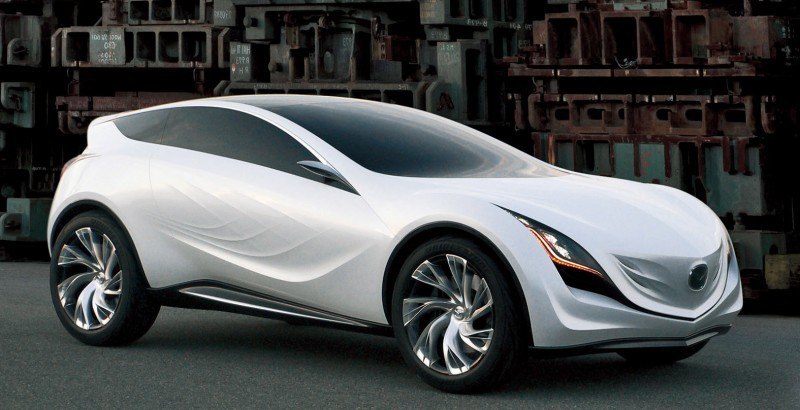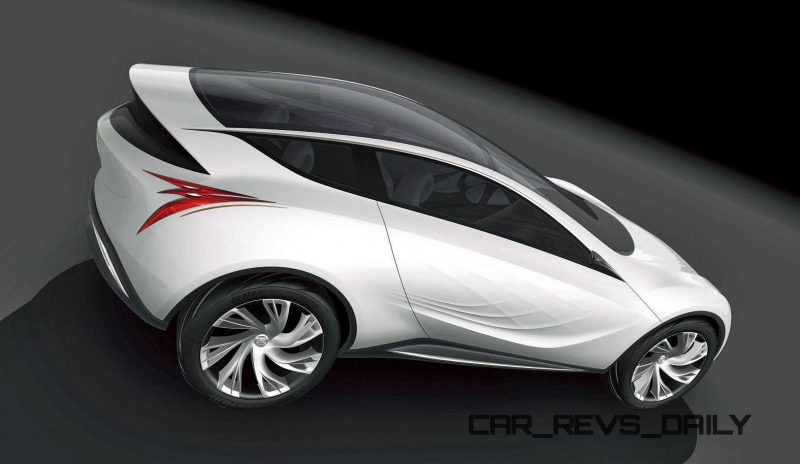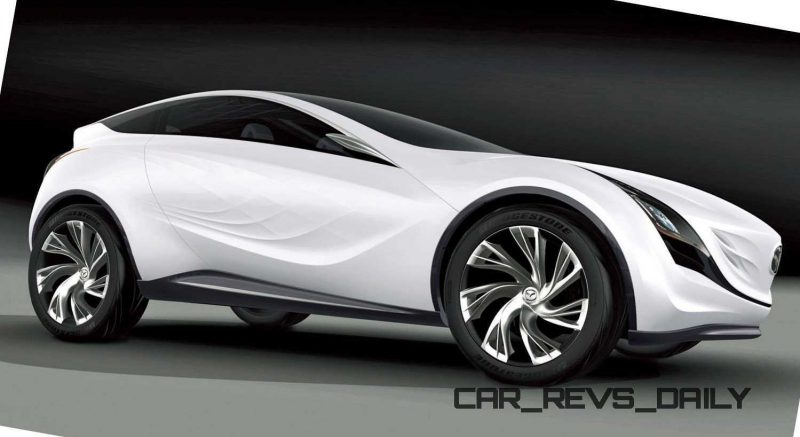 As a small and independent manufacturer, Mazda cannot really afford to flub the design of one of its main production models. Careful design feedback was solicited on a global scale between 2005 and 2010, when the firm rolled out almost a dozen wild concept cars.
As a small and independent manufacturer, Mazda cannot really afford to flub the design of one of its main production models. Careful design feedback was solicited on a global scale between 2005 and 2010, when the firm rolled out almost a dozen wild concept cars.
As sort of a focus-group-by-fire, these concepts showed some good ideas, some bad ideas, and overall the results informed the latest generation of gorgeous Mazda6, fairly cool Mazda3 and very stylish upcoming MX-5 and CX-3.
As a crossover coupe with two massive doors, this Kazamai concept proved two things: that rear-drive proportions are always stunning and desirable, even on front-drive cars. And secondly, that the nose idea needed big improvement. The vertical almond look of these headlamps is fairly cool in theory, but in practise can be off-putting.
This design phase for the company led to the second-generation Mazda6, as car whose unusual style was a turnoff and led to big sales declines versus the clean and simple look of the first-generation car.
As ever, Mazda proves that it is well worth it to float out a concept and test the waters versus diving in without knowing the temp or depth. But perhaps they did not listen closely enough to the feedback on this Kazamai.
2008 Mazda Kazamai



























Mazda Kazamai, which means “swirling crosswinds” in Japanese, was chosen to express the powerful yet nimble character of this stylish and compact crossover. Mazda Kazamai evolves the Mazda Nagare “flow” design creating a dynamic, athletic exterior. Unlike previous concept cars, Mazda Kazamai’s styling represents powerful natural movements that are emotionally expressed through three-dimensional motifs stretching over the whole body, representing a fusion of design and functionality.
Slightly larger than the current MAZDA3, the Mazda Kazamai features all the room and comfort of an SUV, with an innovative body design and flared fenders that emphasize SUV-like strength and a sports car inspired cabin. The wedge-shaped profile was designed to evoke the image of a sleek arrow cutting through a mighty wind, while the body design between the front wheel arches and the roof pillars is intended to express the agility and dynamism of wind gusting along the side of the vehicle. The panel lines on the sides represent swift and elegant crosswinds, further accentuating the dynamic and stylish body design. Large, 22-inch wheels were designed to continue the crosswinds motif with each spoke carefully twisted and larger outside than in the centre, providing a strong sense of movement.
The ideal match for the Mazda Kazamai is the next-generation 2.0L direct-injection engine. Based on the Direct-Injection Spark Ignition (DISI) engine currently offered on the CX-7, Mazda’s next-generation engine helps minimize energy loss and vastly improve thermal efficiency. It is coupled with a lightweight, next-generation, 6-speed automatic transmission that is highly responsive and delivers the direct feel of a manual transmission and 4-wheel drive (4WD) for superior traction.
Mazda Kazamai also features a long list of active safety features including Roll Stability Control (RSC), Blind Spot Monitoring (BSM) System to assist during lane changes and advanced Dynamic Stability Control (DSC).

Tom Burkart is the founder and managing editor of Car-Revs-Daily.com, an innovative and rapidly-expanding automotive news magazine.
He holds a Journalism JBA degree from the University of Wisconsin – Madison. Tom currently resides in Charleston, South Carolina with his two amazing dogs, Drake and Tank.
Mr. Burkart is available for all questions and concerns by email Tom(at)car-revs-daily.com.


